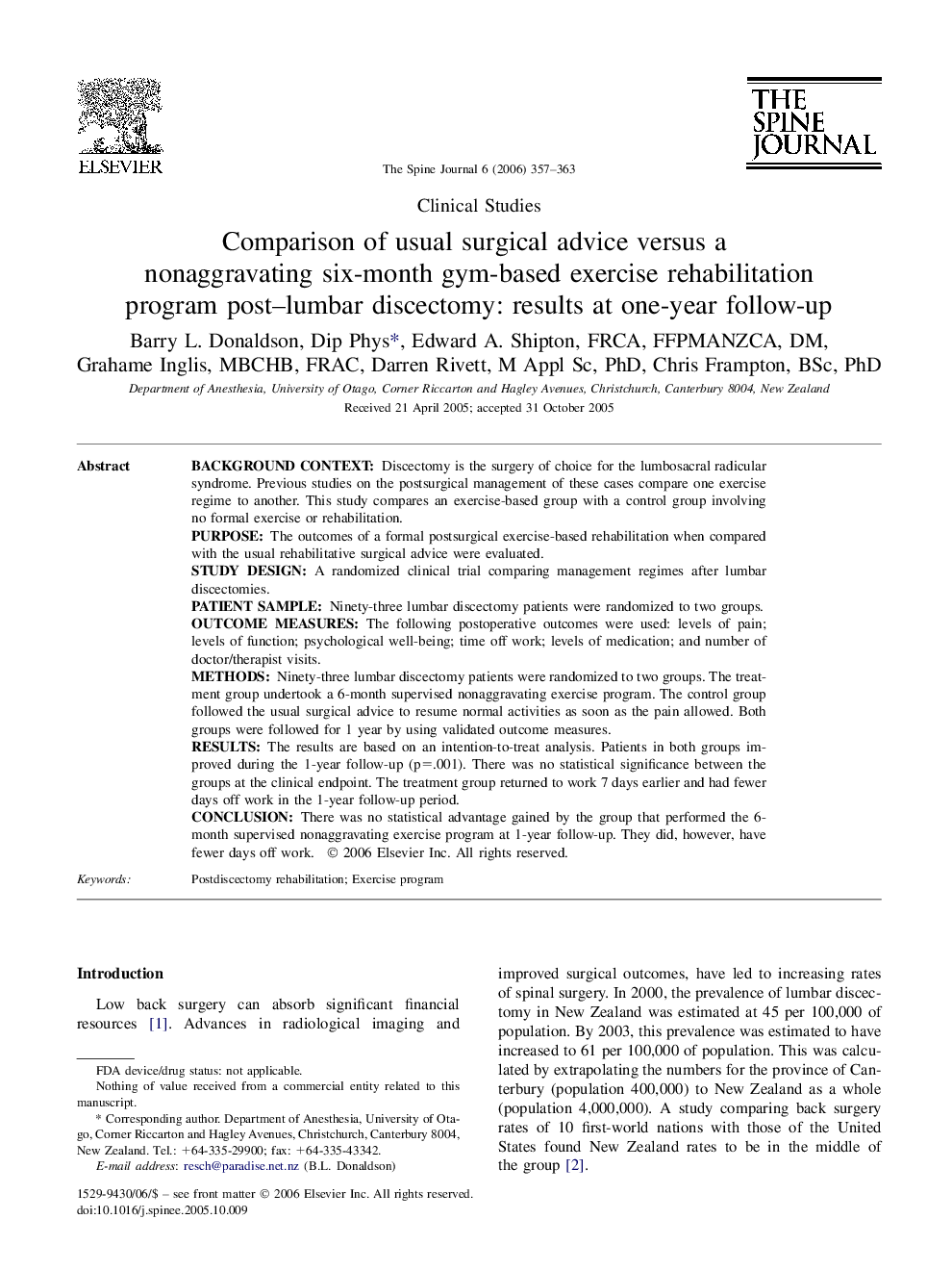| Article ID | Journal | Published Year | Pages | File Type |
|---|---|---|---|---|
| 4100299 | The Spine Journal | 2006 | 7 Pages |
Background contextDiscectomy is the surgery of choice for the lumbosacral radicular syndrome. Previous studies on the postsurgical management of these cases compare one exercise regime to another. This study compares an exercise-based group with a control group involving no formal exercise or rehabilitation.PurposeThe outcomes of a formal postsurgical exercise-based rehabilitation when compared with the usual rehabilitative surgical advice were evaluated.Study designA randomized clinical trial comparing management regimes after lumbar discectomies.Patient sampleNinety-three lumbar discectomy patients were randomized to two groups.Outcome measuresThe following postoperative outcomes were used: levels of pain; levels of function; psychological well-being; time off work; levels of medication; and number of doctor/therapist visits.MethodsNinety-three lumbar discectomy patients were randomized to two groups. The treatment group undertook a 6-month supervised nonaggravating exercise program. The control group followed the usual surgical advice to resume normal activities as soon as the pain allowed. Both groups were followed for 1 year by using validated outcome measures.ResultsThe results are based on an intention-to-treat analysis. Patients in both groups improved during the 1-year follow-up (p=.001). There was no statistical significance between the groups at the clinical endpoint. The treatment group returned to work 7 days earlier and had fewer days off work in the 1-year follow-up period.ConclusionThere was no statistical advantage gained by the group that performed the 6-month supervised nonaggravating exercise program at 1-year follow-up. They did, however, have fewer days off work.
